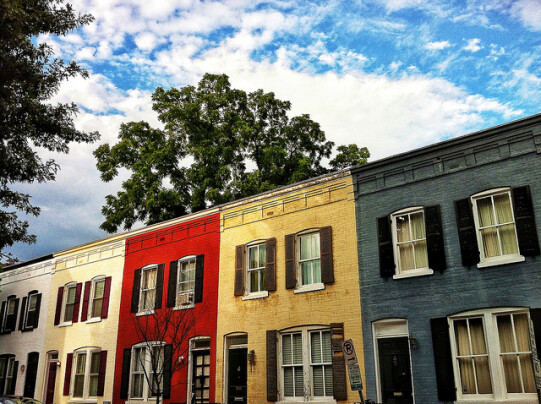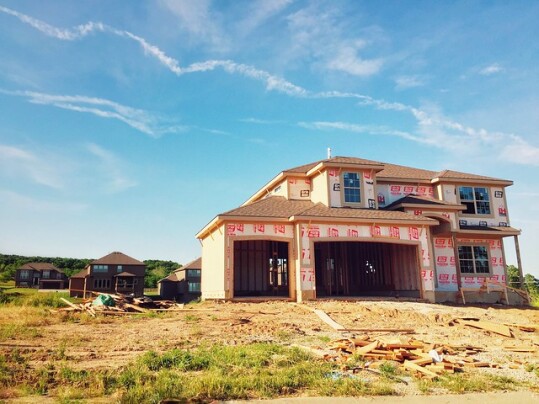The Mortgage Bankers Association’s Purchase Applications Payment Index measures the national median payment applied for by prospective home buyers. In September, the median payment increased from August, rising to $1,941 from $1,839. The increase follows four straight months of declines from the index’s peak in May. Edward Seiler, MBA’s associate vice president of housing economics, says challenging affordability conditions have led borrowers to seek smaller loans. “With mortgage rates continuing to rise, the purchasing power of borrowers is shrinking,” Seiler said. “The median loan amount in September was $305,550 – much lower than the February peak of $340,000.” The index found payments up across all loan categories, with lower-payment mortgages seeing an increase from $1,210 in August to $1,271 in September. Loans backed by the Federal Housing Administration rose to $1,566. Regionally, mortgage payments were highest in Nevada, Idaho, Arizona, Utah, and Florida. (source)
Archive for October 2022
Median Mortgage Payment Up In September
How Many Showings Does The Typical Listing Have?
Home showings are a good indicator to watch, if you want to get a feel for what’s happening in the housing market. After all, what better way is there to gauge how much interest home sellers can expect when they list their home or how much competition buyers will face from other buyers? Knowing the number of home showings the average home for sale garners can tell you a lot about the current market. So how many showings does the typical listed home host? Well, according to one recent analysis, a majority of listings averaged between four and nine showings in September. That’s down from double-digit showings during the peak of last year’s market, but still a solid number. Fewer markets saw a rising number of showings month-over-month, though – indicating demand has slowed as affordability challenges have increased. That means the housing market is less competitive these days, offering today’s home shoppers more time to make decisions and more available options to consider. (source)
Mortgage Demand Falls As Rates Rise Again
According to the Mortgage Bankers Association’s Weekly Applications Survey, average mortgage rates rose again last week, with increases for 30-year fixed-rate loans with both conforming and jumbo balances, loans backed by the Federal Housing Administration, 15-year fixed-rate loans, and 5/1 ARMs. The increases contributed to slower demand week-over-week. In fact, overall demand for mortgage applications fell 1.7 percent from the week before, with demand for home purchase loans 2 percent lower than one week earlier. Joel Kan, MBA’s vice president and deputy chief economist, says demand for loans to buy homes is at its lowest point in years. “Refinance applications were essentially unchanged, but purchase applications declined 2 percent to the slowest pace since 2015 – over 40 percent behind last year’s pace,” Kan said. “Despite higher rates and lower overall application activity, there was a slight increase in FHA purchase applications, as FHA rates remained lower than conventional loan rates.” The MBA’s weekly survey has been conducted since 1990 and covers 75 percent of all retail residential mortgage applications. (source)
Home Seller Profits Fall But Remain High
The past few years have been good to homeowners. Rising home prices and a hot housing market meant homeowners who were looking to make a move could be assured their home would sell quickly and for a great price. But now that the market has slowed down, can potential home sellers expect to be as successful as they would have been had they sold last year or even earlier this year? Well, yes and no. According to ATTOM Data Solutions’ third-quarter U.S. Home Sales Report, the typical profit margin on median-priced single-family home sales dipped from where it was during the second quarter of the year. In fact, it fell from 57.6 percent in the second quarter to 54.6 percent in the third. The decline coincides with a 3 percent decrease in national home value. However, though down quarter-over-quarter, profit margins, home prices, and typical investment returns all remained high, and in some cases near all-time highs. In other words, today’s home sellers may not do as well as they would’ve had they sold in March but they can still expect a good return on their initial investment. (source)
New Listings Still Trail Pre-Pandemic Levels
In a perfectly balanced market, the number of available homes for sale would be equal to the number of interested home buyers. There’d be no price spikes or bidding wars and buyers would have no trouble finding a home that checks off every item on their wish list. Unfortunately, that’s not how things work, especially in the current housing market. These days, the market is imbalanced, with the number of homes for sale still trailing far behind pre-pandemic levels. In fact, according to one recent analysis, overall inventory is 40 percent lower than it was before the pandemic, with new listings down 16 percent in September from one year earlier. So far this year, there have been around 11 percent fewer homes listed for sale than at the same point in 2019. Put simply, the housing supply remains low. That means, even with buyer demand slowing from last year’s pace, there’s still a pretty significant imbalance between the number of homes for sale and the number of potential home buyers. (source)
Low Supply Keeps Homes Selling Quickly
The housing market has shifted. Higher rates, slower demand, and economic uncertainty have cooled the pace of the once hot market. But while a lot has changed, a lot has also stayed the same. For example, according to the National Association of Realtors, homes are still selling quickly and prices continue to rise – even if they have improved from last year. The NAR found the typical home was on the market just 19 days in September. That’s an improvement from 17 days last year at this time, but still a fast pace. Similarly, the median existing-home price has improved after hitting $413,800 in June. In September, it was $384,000, which is better for buyers but remains 8.4 percent higher than last September when it was $355,000. The problem, simply put, is a lack of available homes for sale. Lawrence Yun, NAR’s chief economist, says that’s among the main differences between this market downturn and the last. “The current lack of supply underscores the vast contrast with the previous major market downturn from 2008 to 2010, when inventory levels were four times higher than they are today,” Yun said. (source)
New Home Construction Shows Signs Of Slowing
Every month, the National Association of Home Builders’ Housing Market Index and the new residential construction numbers from the U.S. Census Bureau and the Department of Housing and Urban Development are released. The two reports give us a view of how home builders are feeling and how many new homes they’re building. According to this month’s data, new home construction is showing signs of slowing. In fact, the number of homes that began construction during the month of September was 4.7 percent lower than the month before. Similarly, the NAHB’s index – which measures builders’ perceptions of the new home market – fell for the tenth consecutive month, indicating home builders are feeling less optimistic about the market. So what’s behind the declines? Jerry Konter, NAHB’s chairman, says higher mortgage rates. “High mortgage rates … have significantly weakened demand, particularly for first-time and first-generation prospective home buyers,” Konter said. With buyer demand down, home builders are feeling less confident in the market and have begun to slow plans for future new home construction. (source)







